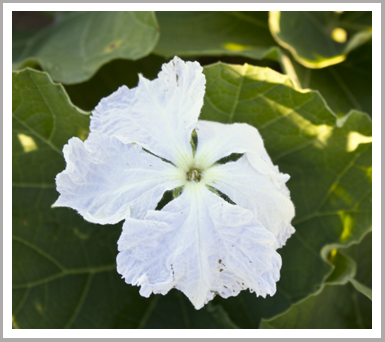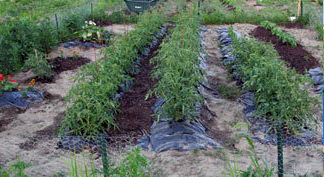Nature Reveals the Truth
 For a while now, I've wanted to write about sourcing good seeds. I'm relatively new to the seed game. This is my third year. By looking at a tomato seed, you have no idea what variety it is, if it's authentic organic, or how fertile it is. Trust is a paramount when sourcing seeds. Seeds are a commodity, and like all commodities, they are bought and sold.
For a while now, I've wanted to write about sourcing good seeds. I'm relatively new to the seed game. This is my third year. By looking at a tomato seed, you have no idea what variety it is, if it's authentic organic, or how fertile it is. Trust is a paramount when sourcing seeds. Seeds are a commodity, and like all commodities, they are bought and sold.
Last year, I came across a source for Goose Creek Tomatoes. I read that it's a rare variety, and there was story about the origins. Without question, that combination peaked my curiosity so much, that I had to grow it. Later, I found out about the questions concerning the veracity of the story.
From Tatiana's TOMATObase;
- There is some controversy about the origins/dating of this tomato, as tomato experts know that there were no 'smooth' tomatoes available in the early 1800s.
- There is also a lot of controversy about the fruit color, whether it is supposed to be red or pink.
Goose Creek seeds are hard to find, but I found a source on eBay. I ordered them right away. They were expensive as far as seeds go, fifty cents a seed to be exact. Since seeds are a commodity, and in a market driven economy, scarcity is factor in price.
When the seeds arrived, they were in a small, clear plastic envelope with a handwritten label on it. A slight pagne of skectipsism came over me. Now, for small seed collectors, having a preprinted package is expense that might discourage them from the important role of seed collecting.
A preprinted package though, is no gurantee that the contents inside, match the content printed on the outside. That's what the white flower told me last week. It provided the truth of what was inside the package of Zucchino Rampicante, a vining zuchinni and pumpkin, that I ordered this year.
I was SO looking forward to this variety. A massive vinning zuchinni with large bottleneck fruit that can be either a summer or winter squash, is a maddness that I embrace whole heartingly.
It would be trellissed with long red asian string beans. A living Jackson Pollock painting perhaps, with the distinct contrast in foligae, flower and fruit between these two varieties.
Alas, that won't happen this year. While I was admiring the lush foligae of the vine, I saw a white flower. I found this odd, squash and pumpkin flowers are yellow. The flower I saw had expired, but I could tell it was a brilliant white.
So, I went to the Google and presented my case, white squash bloom. The verdict, I have either a birdhouse gourd, or an apple gourd. Lucky me. I don't like gourds. I don't get them, nor do I want to. Evidently though, this year I will have no choice.
From what I could find, these two varities of gourds come up consistently id keywords search for white squash flower. They are grown for a variety of craft products, and they do have some interest to them.
Mistakes happen, and I trust the source where these gourd seeds came from. They are passionate about heirloom varities. I had some iffy results from some other vendors this year. It was the first time I ordered from them. Other first time vendors I had good luck with. It's a matter of trial and error, and following your gut. If your not sure, don't order from them. If your fortunate enough to have a local seed vendor, with local seed sources, buy from them.
The Goose Creek tomato seeds I ordered were fine, and so were the Tiger Melon seeds I ordered from that eBay vendor last year. The other melon seeds not so much. This year, the pepper seeds I ordered from different vendor resulted in some fairly week plants across three varities. But I also didn't start a large number of each variety, so it's a tough call. The organic San Marzanno seeds I got from the same vendor are doing tremendous, so it's kind of a balance.
Not every seed from every plant is going to be a blue ribbon winner. I have noticed though that some vendor's seeds have a high germination rate, consistent with what's noted as the standard rate for that variety, while others not so much. This is also all the more reason to learn about seed collecting. You can get to see where your strong plants are, and you can collect seeds from a wide variety of fruit.
The Goose Creek tomato is very tasty, and the green tomatoes are a very light shade of green, almost a translucent white. Very pretty to see. They were a lot like the Box Car Willies (BCW) I grew last year. Almost strikingly similiar. The BCWs were a lot later though, and thanks to a hail storm, which destroyed the BCWs, I couldn't do a tatse test.
I love that fact that a white flower told me a story this week. It goes to show that no matter what, storytellers tell their stories. And, on a blog influenced by Thoreau, that is as much about storytelling as gardening, how fortunate that this story was told by my garden? The wonder of it all.

